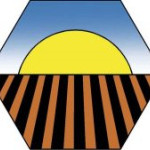- Sektör: Earth science
- Number of terms: 26251
- Number of blossaries: 0
- Company Profile:
An international scientific society that fosters the transfer of knowledge and practices to sustain global soils. Based in Madison, WI, and founded in 1936, SSSA is the professional home for 6,000+ members dedicated to advancing the field of soil science. It provides information about soils in ...
A method of preparing forest soils for planting or seeding that consists of mechanically pushing aside the humus layer to expose mineral soil.
Industry:Earth science
A layer occurring in mor humus consisting of well-decomposed organic matter of unrecognizable origin (sapric material).
Industry:Earth science
A mineral soil horizon that is characterized by the illuvial accumulation of phyllosilicate clays. The argillic horizon has a certain minimum thickness depending on the thickness of the solum, a minimum quantity of clay in comparison with an overlying eluvial horizon depending on the clay content of the eluvial horizon, and usually has coatings of oriented clay on the surface of pores or peds or bridging sand grains.
Industry:Earth science
A salt of orthophosphoric acid such as (NH4)2HPO4, CaHPO4, or K2HPO4.
Industry:Earth science
A layer of soil or soil material approximately parallel to the land surface and differing from adjacent genetically related layers in physical, chemical, and biological properties or characteristics such as color, structure, texture, consistency, kinds and number of organisms present, degree of acidity or alkalinity, etc.
Industry:Earth science
(i) The concentration of solutions expressed in weight or mass units of solute (dissolved substance) per million weight or mass units of solution. (ii) A concentration in solids expressed in weight or mass units of a substance contained per million weight or mass units of solid, such as soil.
Industry:Earth science
A rivalry between two or more species for a limiting factor in the environment.
Industry:Earth science
A measure of the oxygen-consuming capacity of inorganic and organic matter present in water or wastewater. The COD test, like the BOD test, is used to determine the degree of pollution in an effluent.
Industry:Earth science
A relatively large water flow over or through a relatively narrow course.
Industry:Earth science
A general term for those iron oxides that can be reduced and dissolved by a dithionite treatment. Generally includes goethite, hematite, ferrihydrite, lepidocrocite, and maghemite, but not magnetite.
Industry:Earth science
